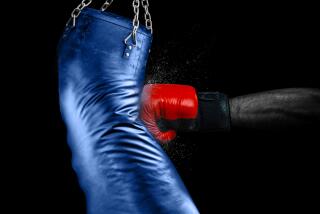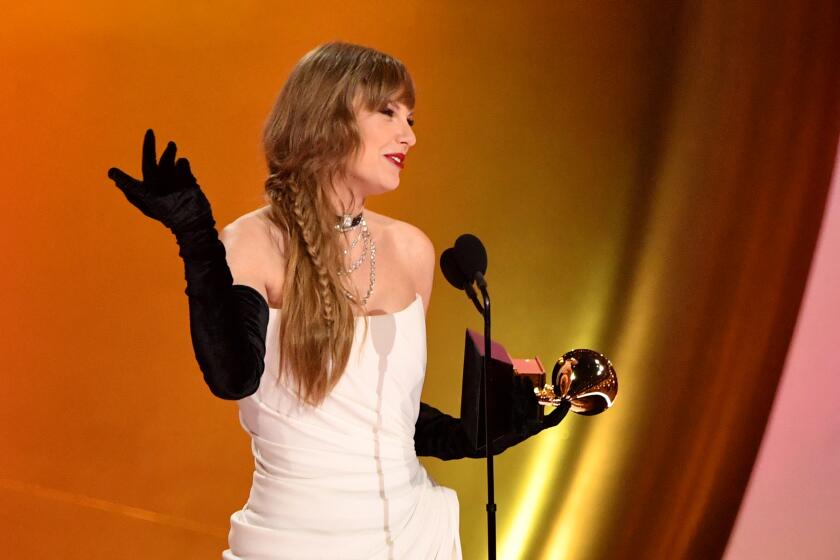Welcome to the high and low
In 1946, L.A. journalist Carey McWilliams wrote what would become one of the most seminal books on Southern California, published at a time when the region was set to explode in size and prominence. “Southern California: An Island on the Land” is an essential 101 on the Southland, digging into everything from American Indian influence to the endless thirst for water to Southern California’s “fabled addiction to cults.” Since the book emerged more than six decades ago, everyone and their mother has cited it: critics, urbanists, historians, bloggers, reporters and academics. It even served as inspiration for the cinematic classic “Chinatown.”
But it’s the chapter on the region’s culture that I’m particularly fond of. In it, McWilliams describes the “amusingly confused culture of the region, a culture which has by no means yet succeeded in eliminating the irrelevant, discarding the incongruous, and coming to grips with the physical factors of the environment.” (Beverly Hills, explained!) He also offers a terrific analysis of the city’s architecture — a landscape that is no one thing, stuffed with Spanish Revival cottages, New England saltboxes and “Mansard-roofed monstrosities.” It was, McWilliams writes, “a wild debauch of eclecticism.” In that statement — which still rings true today — he nails an essential aspect of what makes SoCal such an interesting cultural beast: that pretty much anything and everything goes.
This is exactly why L.A., in the greater metropolitan sense, appeals to me as a writer. Southern California is an area that burps up a lot of cultural product and it’s all over the map. There’s the racial nastiness of D.W. Griffith’s “Birth of a Nation” (shot in Burbank, Ojai and Pacoima, among other places) and the stark prose of John Fante’s “Ask the Dust,” set in the now-vanished hotels of Bunker Hill. There’s Ed Ruscha’s cool pop and Asco’s flamboyant Chicano-Goth performances. There’s the boys club of the Ferus Gallery, one of L.A. early, important art spaces, and the feminist encampment of Judy Chicago’s Womanhouse, which brought art and activism to a dilapidated Hollywood house in the 1970s.
L.A. has produced the sleek trippy-ness of the light and space artists and the grittiness of John Riddle’s “Ghetto Merchant,” a sculpture made from the detritus of the Watts Uprising. There are dramatic gas stations and Richard Neutra’s elegant Lovell House; the maniacal obsessiveness of the Watts Towers and the Googie insanity of the LAX Theme Building. There’s the layered historical drama of David Alfaro Siqueiros “America Tropical” and the campy awesomeness of Kent Twitchell’s 1970s mural “Bride and Groom,” above, which can be clearly seen from the top of the L.A. Times employee parking lot.
I’ve been checking in on Twitchell’s strangely beguiling mural, with its totally tough bride, for more than 20 years. I took a picture of it — one that has hung in every kitchen I’ve had for the past 20-plus years — during my first stint at the Times in 1990, when I worked here as a desk assistant in college. That’s when I spent a summer transmitting photos (in the dark days before JPGs) and putting layouts in pneumatic tubes (very steampunk). In fact, I have my very own vintage coffee mug to prove I was here. This place, for better or worse, inspired an addiction to journalism that I haven’t been able to shake since. In the intervening years, I’ve worked as a reporter at Time magazine in New York, and covered culture, as an independent journalist, for National Public Radio, ARTnews, Architect, Studio 360, WNYC and a slew of others.
A couple of years ago, I came back to L.A. because I’m a girl who can’t live without hazy sunshine and good burritos. I grew up in the Valley (Van Nuys, Panorama City, Granada Hills) and Orange County (Irvine, where we stole smokes in the orange groves and lifted strawberries from the fields). I’m thrilled to be back home — both in L.A. and at The Times — investigating the region’s culture.
No single writer can capture the entirety of this massive city-state in a single blog. But, in bits and pieces, I hope to span its cultural range, from bathroom graffiti to to obscure art books. I also hope to hear from you: about the art that’s inspiring you, the architecture that’s enraging you and what terrifically bizarre cultural wonders you’ve uncovered on YouTube. (I loooove to chat on Twitter, so find me there.)
Thanks for reading. Now, let’s get this sucker off the ground. There’s writin’ to do.
More to Read
The biggest entertainment stories
Get our big stories about Hollywood, film, television, music, arts, culture and more right in your inbox as soon as they publish.
You may occasionally receive promotional content from the Los Angeles Times.







